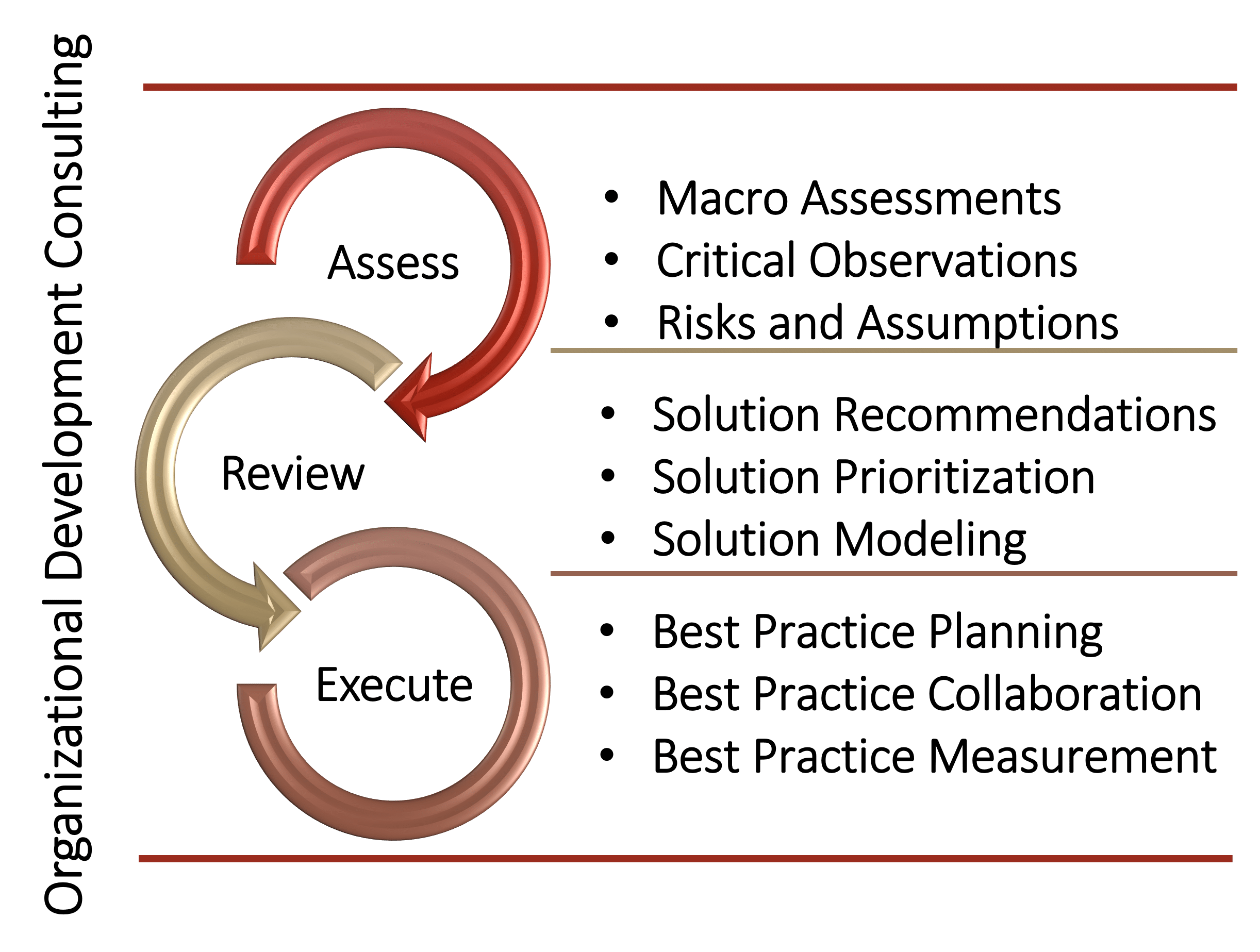Strategy Design and Planning Considerations
Strategy: (Directional action items required to reach our vision/mission while embracing our values) - A company’s strategy outlines a framework of choices that determine the nature and direction of an organization. This includes goals, objectives, and actions we will take to reach the organization’s mission and vision. It includes policies and key decisions adopted by management that have major impacts on financial performance. It may include expanding services, reaching new markets, or adapting new technologies. It may also include talent development and inform hiring and training practices.
Questions to Ask When Designing a Business Strategy
- What do we have to do extraordinarily well to compete or succeed?
- How do we bring unique value to our customers?
- How do we expect to serve the future needs of our customers?
- What do employees want or deserve in exchange for their efforts?
- What is this organization's competitive advantage over others in the industry?
Environmental Factors that a Affect Business Strategy
- Ensuring your team understands the strategic planning process and purpose.
- Identify the steps to break out of the old paradigms during planning.
- Explore culture and applied strategic planning to ensure your sphere of perspective is unlimited.
- Conduct a strategic planning needs assessment to ensure we are building “new” strategy not recycling the old.
- Perform a stakeholder analysis to ensure the wider organization is applicable to change.
- Formulate a mission statement to support the efforts.
- Build a foundation using business modeling that depicts the current, the transformational, and future state.
- Conduct a SWOT analysis to validate the needs.
- Conduct a gap analysis to identify the space between the current and future state.
- Integrate action plans to support execution of the needed change.
- Conduct contingency planning in the know reality of agility along the way.
Business Strategy Integration
- Strategic to support the Vision, Mission, and Values.
- Operational to support the macro development and roll-out for implementation.
- Tactical to drive individual projects that roll-up to the macro plan.
Why Strategy Design and Planning Is Important Sucess
The strategy planning process is not an activity that is restricted to the boardroom, any longer. In fact, most progressive organizations leverage a form of strategic planning throughout all levels of the company. This activity is supported by skills such as strategic thinking, root cause analysis, and problem solving and is driven by good communications and networking presence.
Strategic planning is critical for organizational success. Let’s explore why it’s so important:
- Create One, Forward-Focused Vision
- Strategy touches every employee and serves as an actionable way to reach your company’s goals.
- Strategic planning creates a single, forward-focused vision that aligns your company and its shareholders. By making everyone aware of your company’s goals, how and why those goals were chosen, and what they can do to help reach them, you can create an increased sense of responsibility throughout your organization.
- Enhanced Decision-Making
- Strategic planning provides a clear roadmap for decision-making. It allows organizations to understand their current position, set key elements, and identify opportunities.
- In a rapidly changing environment, strategic planning ensures better decision-making by anticipating and adapting to challenges.
- Resource Management and Efficiency
- Effective strategic planning helps allocate resources efficiently. By prioritizing efforts and aligning them with organizational goals, companies can optimize resource utilization.
- Companies like Apple, Amazon, and Google stand as testaments to the power of effective strategic planning in managing resources effectively.
- Fostering Innovation and Performance
- Strategic planning fosters innovation by providing a framework for exploring new ideas and approaches.
- It enhances performance by setting clear goals, measuring progress, and adapting strategies as needed.
Summary
Strategic planning is crucial for staying focused, aligned, and successful in today’s dynamic business landscape.
Organizational Development Consulting
Client-Centric Engagement Model
Each solution found in our catalog can be scaled to meet your organization's needs. Consulting engagements are built on a collaborative three-step process of Assess, Review, and Execute stage gates. This model provides a high value and collaborative approach that allows organizations to measure ROI, performance, and continuous improvement throughout the entire engagement. Our executive level team of consultants will provide actionable and practical recommendations that can be implemented via our collaborative approach to the partnership.

For the Enterprise
- Experience personalized service at scale. AMS has a global reach with the highest degree of expertise across a range of Fortune 500 companies, Government agencies and Global 2000 organizations.
For the Emerging and Middle-Market
- Experience the entrepreneurial spirt that our firm is founded on with a unique blend of expertise to accommodate the unique needs of smaller organizations.
Customize your Consulting Experience
- Align subject matter experts with your industry, region, and culture
- Support solutions with correlating Research
- Accelerate Individual Growth with Performance Coaching
- Supplement solutions with Professional Development Training
- Review Solution Briefings
- Integrate Digital Resources – Thought Leader Interviews – Insights Podcast
Join the ranks of leading organizations that have partnered with AMS to drive innovation, improve performance, and achieve sustainable success. Let’s transform together, your journey to excellence starts here.